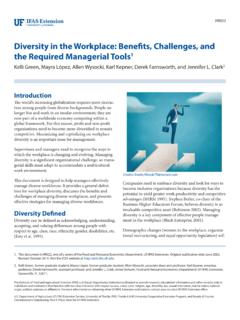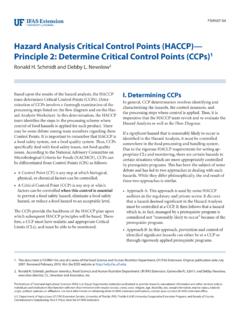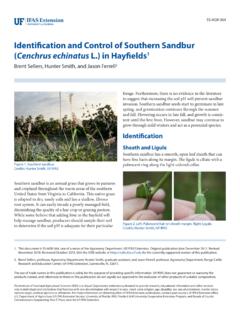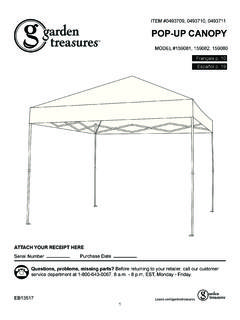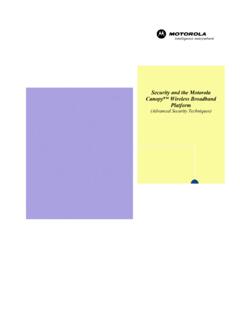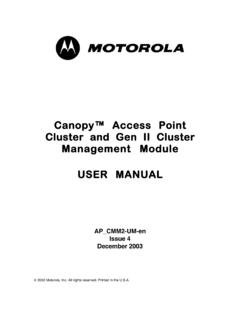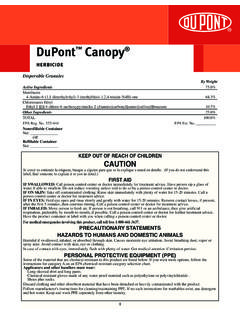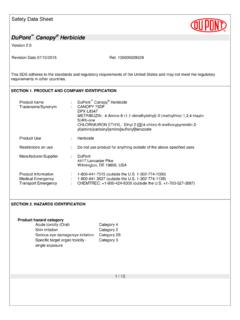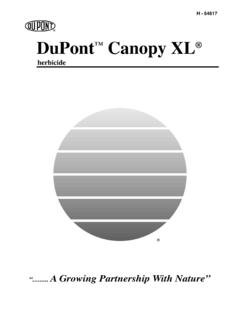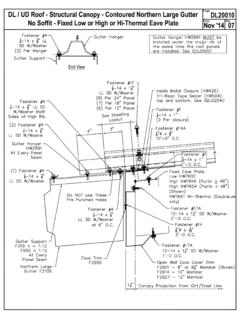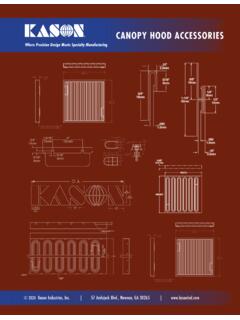Transcription of Canopy Management of Citrus Trees - EDIS
1 2022 Florida Citrus Production Guide: Canopy Management1 Tripti Vashisth, Mongi Zekri, and Fernando Alferez21. This document is CMG16, one of a series of the Horticultural Sciences Department, UF/IFAS Extension. Original publication date May 2017. Revised March 2020. Reviewed April 2021. Visit the EDIS website at for the currently supported version of this Tripti Vashisth, assistant professor, Horticultural Sciences Department, UF/IFAS Citrus Research and Education Center; Mongi Zekri, Citrus Extension agent, UF/IFAS Extension Hendry County; and Fernando Alferez, assistant professor, Horticultural Sciences Department, UF/IFAS Southwest Florida REC; UF/IFAS Extension, Gainesville, FL Institute of Food and Agricultural Sciences (IFAS) is an Equal Opportunity Institution authorized to provide research, educational information and other services only to individuals and institutions that function with non-discrimination with respect to race, creed, color, religion, age, disability, sex, sexual orientation, marital status, national origin, political opinions or affiliations.
2 For more information on obtaining other UF/IFAS Extension publications, contact your county s UF/IFAS Extension office. Department of Agriculture, UF/IFAS Extension Service, University of Florida, IFAS, Florida A & M University Cooperative Extension Program, and Boards of County Commissioners Cooperating. Nick T. Place, dean for UF/IFAS Canopy and bearing volume are two important factors in fruit production and fruit quality. Generally, Trees with larger Canopy and bearing volumes produce more fruit than smaller- Canopy Trees . Canopy Management is an important aspect of Citrus production in Florida to avoid problems associated with overcrowding and excessively tall Trees , to improve light interception, and to improve pesticide distribution into the Canopy , as well as to facilitate equipment operation within the grove.
3 Proper control of vegetative growth is essential for the maintenance of healthy, productive Citrus Trees . The effect of insufficient light is frequently observed in mature Citrus groves that are not managed regularly. Shading reduces yield and foliage on the lower parts of the Trees . Sunlight not only influences flowering and fruit set but also enhances fruit quality and color development. Increased sunlight penetration within the tree Canopy might also allow foliage to dry more quickly after a rain shower and could help reduce establishment of fungal pathogens. Therefore, adjustments must be made to the tree Canopy to maximize sunlight is one of the oldest horticultural practices that changes the form and growth of a tree.
4 The pruning process (1) adjusts tree shape and the ratio of the framework to the fruit-bearing shell of the Canopy , (2) alters the shoot/root ratio, and (3) changes the carbohydrate (food storage) status of the tree. Pruning healthy, mature Citrus Trees can reduce yields in proportion to the amount of foliage removed and can delay fruiting of young, nonbearing Trees . Pruning should therefore be limited to that required for future Canopy bearing-surface development and to conduct efficient cultural and harvesting operations (Figure 1). Under Florida weather conditions, Citrus Trees often produce vigorous vegetative growth, which can result in overcrowding and shading. Therefore, Canopy Management is very important.
5 In general, tree response to pruning depends on several factors, including variety, rootstock, tree age, growing conditions, time of pruning, and production practices. There is no fixed set of rules, and therefore each situation should be critically analyzed before any severe Canopy Management decisions. Growers are encouraged to gain a clear understanding of the basic principles regarding pruning and to take advantage of research results as well as to consult knowledgeable colleagues and custom operators for their observations and Pruning CutsThinning out and heading back are the main types of pruning cuts (Figure 2). Thinning out is a selective pruning method that involves the removal of complete branches down to the main trunk and is often done with handheld equipment.
6 It encourages longer growth of the remaining terminals and can result in a more open tree, which allows more sunlight to penetrate deeper into the tree Canopy . Thinning out is commonly seen in peaches and plums to 22021 2022 Florida Citrus Production Guide: Canopy Managementmaximize light penetration into the inner Canopy for better fruit set and growth. This type of pruning is generally considered too labor intensive and costly, and therefore it is not commonly practiced in the Florida Citrus industry. Heading back removes the terminal portion of a shoot or branch, removing apical dominance and stimulating lateral bud breaks (Figure 2). As a result of heading back, Trees are more branched and compact.
7 Mechanical hedging and topping are the main forms of mass heading back used in Florida for mature Management for Young TreesSevere pruning and training of young, nonbearing Trees tends to delay fruit production and should be avoided. Most Trees usually need no pruning for the first few years in the grove except for removal of sprouts on the trunk. Larger sprouts should be cut off flush with the trunk to avoid dominance over a weaker tree. Sprouting on the trunks of young, nonbearing Trees can be greatly reduced by using a commercial sprout inhibitor containing naphthaleneacetic acid (NAA; refer to Plant Growth Regulators, chapter 20 of this guide). While protective wraps around the trunk will reduce sprouting, careful monitoring and observation is required to avoid insect and disease problems under the Management for Mature TreesWhen mature Trees begin to overcrowd, growing tall and into the row middles, Canopy Management becomes essential to maintain tree size and improve light penetra-tion.
8 Hedging and topping are very common cultural grove- Management practices in and ToppingHedging consists of cutting back the sides of Trees to prevent or alleviate crowding. Hedging produces numerous cut wood surfaces along the side of the tree Canopy from which new sprouts arise, eventually developing into a wall of new foliage. Middles (alleys) between tree rows should be sufficiently wide to accommodate grove equipment and provide adequate light access to the sides of the Trees . Middles are usually hedged to a width of 7 to 8 ft but will vary depending on original grove design, scion variety, rootstock, and equipment used in all production should be completed before Canopy crowding becomes a problem.
9 As a general rule of thumb, pruning of branches greater than (1/8 1/4 ) in diameter should be avoided. Developing a proactive pruning pro-gram should assist managers in removing the right-sized branches. Removal of a significant portion of the tree will result in excessive vegetative growth and a drastic reduction in subsequent yield. Hedging is usually done at an angle, with the boom tilted inward toward the treetops so that the hedged row middles are wider at the top than at the bottom. This angled hedging allows more light to reach the lower skirts of the tree. Commonly used hedging angles vary from 10 to 15 degrees from should be done before Trees have become exces-sively tall and should be an integral part of a tree-size maintenance program.
10 Long intervals between toppings increase the cost of the operation due to heavy cutting and more brush , excessively tall Trees are more difficult and expensive to harvest and spray. Topping Trees will improve fruit quality and increase fruit size while reducing manage-ment and harvesting costs. Some common topping heights are 12 to 14 ft at the shoulder and 16 to 17 ft at the peak. Generally, topping heights should be two times the row-middle heights are sometimes used for training Trees , increasing fruit size, or rejuvenating declining Trees , or after flooding events that damaged the root system. Taller Trees are sometimes maintained when they are vigorous and widely spaced. Trees in the flatwoods areas are generally topped lower than those on the ridge because the more limited root systems will usually not support as much top growth.

